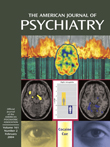Being asked to review the new edition of this book is akin to sending a Shakespearean scholar a new edition of Hamlet revised by the Bard himself. The first and second editions of this book were published during my graduate student days, the third during medical school, the fourth during my residency training. The first edition not only helped me through my first course of neuropharmacology but had a major impact on my decision to choose neuroscience over microbiology/immunology. My copy had more yellow underliner in the text than unmarked sections.
When it first appeared, The Biochemical Basis of Neuropharmacology was the only book of its kind, and it filled the void with aplomb. As the authors note in their introduction to the current edition, the field has exploded beyond any of our most optimistic predictions. There now exists a myriad of worthy challengers—large textbooks, manuals, books designed for graduate-level courses in neuroscience and/or pharmacology—and some are quite good. Very few, however, if any, are as good as this volume. In 400 pages, it provides the novice (undergraduate and graduate students, resident physicians, fellows) and the interested specialist in another field a very readable and understandable summary of a broad array of neuroscience—not just neuropharmacology but also molecular and cellular neurobiology. The new cover is surely the most attractive of any of the previous editions. After five introductory chapters that constitute approximately one-quarter of the book, six chapters with a focus on one of more neurotransmitters follow. The final two chapters are concerned with cellular mechanisms in learning and memory and treating neurological and psychiatric diseases.
In the first edition, there was a paucity of knowledge to communicate about the subject area; in the eighth edition, the problem is the converse—how to distill the remarkable accrual of neuroscience in general and neuropharmacology in particular to a manageable yet state-of-the-art and informative volume.
The authors have succeeded indeed in attaining their stated goals. Most notably, some of the chapters have been revised very substantially, e.g., “Molecular Foundations of Neuropharmacology and Receptors,” and the results are impressive—the authors convey complex concepts with relative ease, a particular delight to the beginning student. Whatever is omitted can be gleaned easily from more specialized and comprehensive books. If the book is to be judged as to how well it educates and titillates the neophyte, then it remains an astounding success. It seduces the student to neuropharmacology, ever so subtly, as it informs.
I would be remiss if I did not identify a few areas of the book where there remains room for improvement. The illustrations are spotty, and the publisher seems unaware that the bar has been set high for the inclusion of informative, high-quality color photographs, especially in immunohistochemistry. There is a surprising absence of any functional brain imaging—magnetic resonance imaging or positron emission tomography—both in illustrations and the text. The chapter titled “Treating Neurological and Psychiatric Diseases” is far too short, and many exciting recent findings on the biology of depression and its treatment are not described. This chapter should probably be expanded into two chapters, one on pathophysiology and a second on treatment. The neuropeptide chapter could also be expanded. These are, however, minor quibbles. Like a comfortable favorite novel, this book is worth reading every few months. In summary, this volume deserves a place on the shelf of students and practitioners alike. It is surely one of the best buys in the academic book pile.

